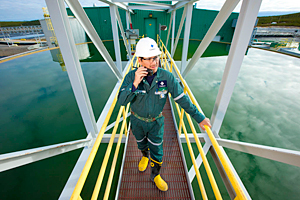Continual improvement – Effluent Quality


Cameco seeks to continually improve the quality of the treated water we release to the environment.
Key Lake
In 2006, Cameco developed an action plan to reduce the amount of molybdenum and selenium in the treated water released to the environment from the Key Lake mill. This involved the design, construction, and commissioning of a new state of the art treatment circuit to specifically target and remove these metals from the effluent stream.
Testing confirms significant reductions have been achieved in concentrations of both molybdenum and selenium in mill effluent and loadings in the downstream environment.
It also helped Key Lake meet a waste management challenge. The neutralization process that helps Key Lake remove molybdenum from treated water also results in a stable molybdenum-iron precipitate that will enhance the long-term performance of Key Lake's tailings management facility.
McArthur River
The McArthur River operation has taken a phased approach to reduce the amount of molybdenum in its treated minewater.
The goals are to isolate molybdenum-laden minewater, improve treatment process efficiency, and ensure proactive monitoring and management of molybdenum concentrations in mine processes.
Work began with the conversion of the site's primary water treatment plant to a circuit dedicated to the removal of molybdenum from the effluent stream. Efforts then focused on the underground operation where sources of water containing higher levels of molybdenum were segregated from clean water sources and re-routed to the primary plant for treatment.
Proactive monitoring of the underground operation and water-handling system has allowed for more efficient water management and treatment. The approach taken has proved very successful. McArthur River was able to exceed its target and increased the average molybdenum removal rate to more than 90%.
Rabbit Lake
New treatment circuits were introduced at the Rabbit Lake mill in 2009 to remove molybdenum and selenium from the effluent stream. By 2010 the improvement in effluent quality was significant, reducing discharge concentrations by 83% for uranium, 89% for molybdenum and 50% for selenium. Rabbit Lake continues to actively monitor water quality to ensure concentrations stay within target levels.

